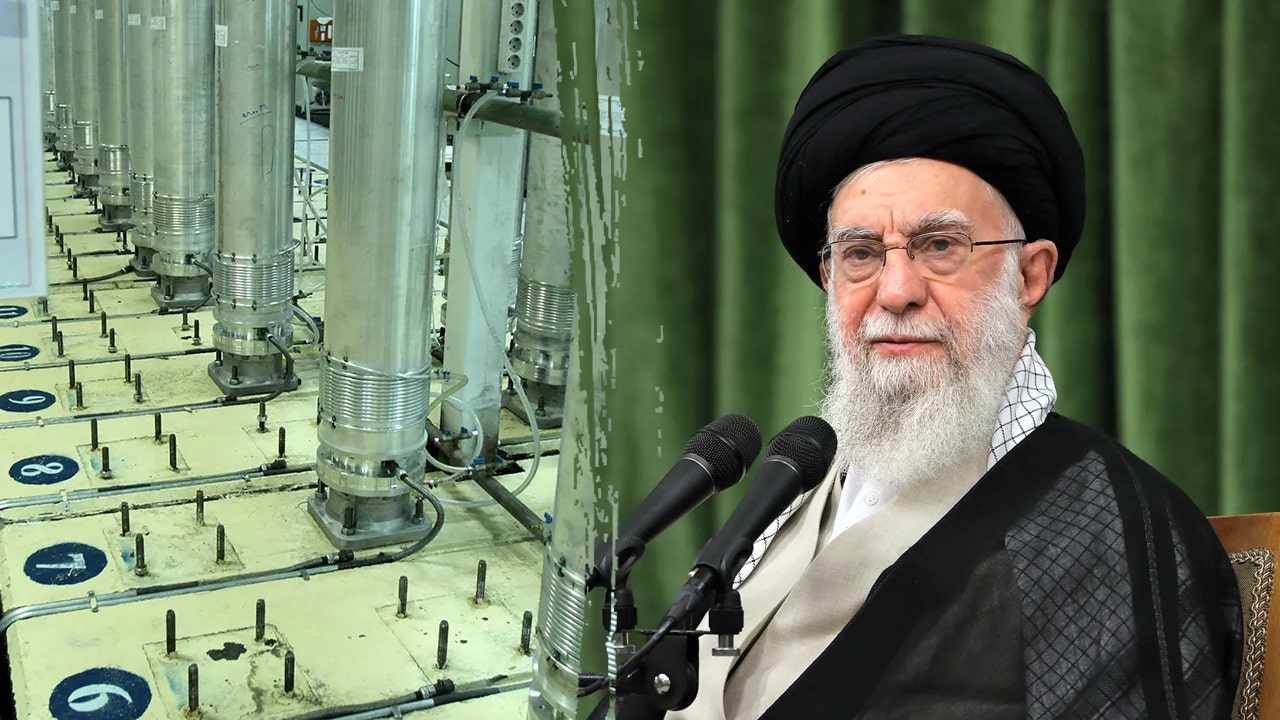Notre-Dame Cathedral sat in the pre-dawn chill like a spaceship docked in the heart of Paris, its exoskeleton of scaffolding lit by bright lights. Pink clouds appeared to the east as machinery hummed to life and workers started clambering around.
One of them, Hank Silver, wearing a yellow hard hat, stood on a platform above the Seine River and attached cables to oak trusses shaped like massive wooden triangles. A crane hoisted them onto the nave of the cathedral, which was devastated by fire in 2019.
Mr. Silver — a 41-year-old American-Canadian carpenter — is something of an unlikely candidate to work on the restoration of an 860-year-old Gothic monument and Catholic landmark in France. Born in New York City into an observant Jewish family, he owns a small timber framing business in rural New England and admits that until recently he didn’t even know what a nave was.
But there is nowhere else Mr. Silver would rather be.
For the tight-knit international community of traditional carpenters and woodworking specialists, the loss of Notre-Dame’s ancient lattice of oak beams was a tragedy. It also has given them a way to show the world that their manual tools and techniques have stood the test of time.
“Nobody builds cathedrals anymore,” at least like this, Mr. Silver said recently over lunch, flipping through pictures of Notre-Dame on his phone and describing the camaraderie shared by the nearly 500 journeymen, craftsmen and supervisors who work at the site. The opportunity to work on a project like this, he added, is “once in a millennium.”
“It has elevated all of the artisans in France and in the world,” he said. “How many kids staring at their iPads are even aware that they can grow up to be a stonecutter, a traditional carpenter, a mason?”
Notre-Dame is scheduled to reopen in December — a little over five years after the blaze, as promised by President Emmanuel Macron in the days that followed.
The vaults are almost entirely rebuilt and cleaned, a new gilded copper rooster is perched atop the finished tip of the spire, and the wooden attic is redone. Even after the reopening, renovations will continue.
The reconstruction is an intricate puzzle involving tight scheduling and a complex ballet of stonecutters, painters, stained glass restorers, gold leaf decorators, steeplejacks, crane operators, organ cleaners and roof coverers.
“This cathedral speaks to us all,” said Philippe Jost, the head of the reconstruction task force. France’s best craftsmen rushed to participate, he said, but the presence of a few foreigners like Mr. Silver was meaningful, too.
“It says a lot about the appeal and fascination that this extraordinary monument exerts,” Mr. Jost said.
Mr. Silver’s path to Notre-Dame started with Carpenters Without Borders, or C.S.F., a France-based organization of traditional woodworkers who volunteer to restore unique constructions, like a castle moat bridge in France or octagonal wells in Romania.
Through C.S.F., Mr. Silver had befriended Loïc Desmonts, who runs a traditional carpentry business in Normandy with his father.
In 2022, Mr. Desmonts’ company was selected to rebuild the nave woodwork, in partnership with Ateliers Perrault, a company from western France with historical monument expertise. Mr. Desmonts asked Mr. Silver and Will Gusakov, a timber framer based in Vermont, to put together a small crew of Americans to join.
“Sometimes it did feel a little bit funny to be an American working on an almost quintessentially French project,” said Mr. Gusakov, who temporarily moved to France with his wife and two toddlers. But, he added, “Everybody was so excited.”
Mr. Silver arrived in January 2023 and spent eight months in a workshop in rural Normandy recreating the nave’s wooden framework, a solid oak assembly of nearly 60 trusses between the spire and the belfry towers that is 100 feet long, 45 feet wide and 32 feet high.
Like almost all of Notre-Dame’s renovation, the attic was redone exactly the way it was before the blaze — a replica where every truss is unique and fits within the cathedral’s curved and uneven walls.
“We’re restoring a great deal of authenticity to the wooden framework,” said Rémi Fromont, one of the lead architects at Notre-Dame and an expert on its carpentry. “Same materials, same techniques and same design.”
The goal is to preserve an important architectural heritage — the original 13th-century woodwork was a watershed for its time, Mr. Fromont said — and to show that centuries-old carpentry methods are still efficient.
In traditional woodworking circles, including for Americans, “an identical reconstruction was the only way to go,” Mr. Desmonts said.
Mr. Silver and other carpenters hewed the oak logs mostly by hand, first with long-handled axes, then broadaxes. Some of the axes were made specifically for the project by blacksmiths at a forge in the Alsace area of eastern France.
The carpenters drew a full scale plan of each truss directly onto the workshop floor, then carefully placed the beams that would make up the truss on its unique location on it. Using a plumb line to precisely map the irregularities of each piece, they laid out each joint to create a tight fit.
The beams were assembled using mortise and tenon joinery, in which a protruding tenon slots into a mortise hole and is held fast with an oak peg. The trusses were assembled at the workshop for a dry-fit, then disassembled and trucked to Paris, where carpenters put them back together.
Next, Mr. Silver will work with roofers as they nail down oak boards that will form the roof deck, which will be covered with lead.
He and the other workers cannot wear their work clothes home to avoid bringing with them lead particles that were deposited after the fire burned the original roof.
Mr. Silver said he cherishes the time he has left at Notre-Dame, whether using it to admire the sunset from a balcony lined with snarling chimeras or to take one last close-up look at a stained-glass window that will soon be inaccessible.
“It never gets old,” he said.
Growing up in New York City, no one around him worked wood, Mr. Silver said. His mother was a speech therapist; his father did compliance work for Wall Street firms and wrote a financial newsletter.
Nor was he exposed to many churches. Mr. Silver’s father became a rabbi when his son was a teenager, and the son declared himself an atheist at age 5.
Mr. Silver later studied filmmaking in Montreal. But in the early 2000s, while helping his grandmother move, he stumbled across old books that beautifully illustrated traditional woodworking.
“I became completely fascinated,” he said. After completing his degree, he started working on home remodeling crews, then moved to Vermont, where he learned traditional timber framing. Later, he started a small carpentry business in western Massachusetts and joined the Timber Framer’s Guild.
Now, thanks to a skilled worker visa that gives access to a French residency permit, Mr. Silver is living in Paris, where he expects to stay for several years. He then plans to work in rural France, traveling occasionally for one-off construction or teaching gigs.
“I was ready for a change in my life anyway,” he said after a morning of apartment hunting. “I’ve always wanted to live in Europe.”
He already peppers his English with French carpentry terms like “sablière” (a wall plate). When Mr. Macron visited Notre-Dame in December, Mr. Silver even slipped him a letter requesting French citizenship.
“People don’t think of carpentry as a type of business, or pursuit, or calling that takes you around the world,” he said. A skeptical border agent at Boston’s airport once quizzed him about his visa until Mr. Silver explained he was working on Notre-Dame.
“‘That’s the coolest job,’” Mr. Silver recalled the agent saying.
He agreed.






